With the Dublin Marathon just over, let's take a look at one of the most common running injuries that we see here in the clinic, Plantar Fasciitis.
So What is it?
Plantar Fasciitis is generally a condition that causes sharp heel pain with first steps in the morning or first steps after sitting down for a period of time. For runners pain can also be present at the start of the run, warm up and go away during the run to then return more intensely towards the end of the run or later that day. Plantar Fasciitis can be a very tricky condition to treat and can notoriously last for significant periods of time. Plantar Fasciitis affects up to 10% of all runners and is the third most common running injury, particularly in people who run longer distances.
What Causes it?
Plantar fasciitis, despite it’s name, is currently thought to not be related to an inflammatory response. Rather it is now understood to be an overuse injury due to repetitive stress placed through the plantar fascia at it’s insertion on the inside part of the heel bone. The plantar fascia essentially undergoes a cycle of micro-tearing and healing, which causes a release of chemical mediators that produce pain. This cycle then eventually leads to weakening of the plantar fascia.
There are two categories of risk factors for this condition, intrinsic factors which are related to body characteristics and extrinsic factors which are related to things outside the body like physical activity or footwear. Some of the main intrinsic risk factors are people with high arches or flat feet, tight and weak calf muscles, tight and weak plantar fascia, high bmi, and age. Some of the main extrinsic factors include inadequate footwear, increase in activity too quickly and occupations that require prolonged standing or walking.
How to Treat it?
Plantar Fasciitis can be a self limiting condition, with 75-80% of cases resolving within 12 months. However, due to the nature and severity of the pain associated with this condition, waiting 12 months to see if there are improvements is generally not satisfactory for most people. To effectively treat plantar fasciitis here in SPARC we used a multimodal treatment approach. If running or physical activity is a big driver of heel pain the first part of treatment is to usually modify activity and reduce the volume of exercise to put less stress on the plantar fascia or to provide more rest and recovery to the area. Then, daily stretching of calf muscles and plantar fascia has been shown to be effective in providing pain relief for people with plantar fasciitis.
Strength training and extracorporeal shockwave therapy (ESWT) are then what we would regularly use in the clinic to improve people's pain and function and return them to the activities they want to do. Progressive strengthening of plantar fascia, foot muscles and calf muscles has been shown to provide better pain relief vs corticosteroid injection and plantar fascia specific stretching. Simple exercises like weighted calf raises done with both a straight leg and bent leg have been shown to be effective at improving foot and calf muscle strength.
Another non-invasive treatment modality proven to be quite effective for pain relief is extracorporeal shockwave therapy (ESWT).ESWT creates a sound shockwave that enters the plantar fascia and stimulates increased blood flow, healing of the fascia and tissue remodelling. ESWT has been shown to provide significant pain relief, improve foot function and has minimal side effects. Main side effects observed were redness around the area, mild tenderness and some increase in sensitivity in the area but these did not appear to last too long.
Where SPARC Comes in?
Here at SPARC we have all the tools, knowledge and experience to treat and manage that tricky heel pain that is plantar fasciitis. So if you are struggling with heel pain post the marathon or struggling day to day with heel pain make sure you call into our SPARC Physiotherapy Clinics in Rathfarnham, Greystones or Sandyford and let us help get you back on track.
References:
Latt LD, Jaffe DE, Tang Y, Taljanovic MS. Evaluation and Treatment of Chronic Plantar Fasciitis. Foot Ankle Orthop. 2020 Feb 13;5(1):2473011419896763. doi: 10.1177/2473011419896763. PMID: 35097359; PMCID: PMC8564931.
Petraglia F, Ramazzina I, Costantino C. Plantar fasciitis in athletes: diagnostic and treatment strategies. A systematic review. Muscles Ligaments Tendons J. 2017 May 10;7(1):107-118. doi: 10.11138/mltj/2017.7.1.107. PMID: 28717618; PMCID: PMC5505577.
Trojian T, Tucker AK. Plantar Fasciitis. Am Fam Physician. 2019 Jun 15;99(12):744-750. PMID: 31194492.
Rathleff MS, Thorborg K‘Load me up, Scotty’: mechanotherapy for plantar fasciopathy (formerly known as plantar fasciitis)British Journal of Sports Medicine 2015;49:638-639.
Aqil A, Siddiqui MR, Solan M, Redfern DJ, Gulati V, Cobb JP. Extracorporeal shock wave therapy is effective in treating chronic plantar fasciitis: a meta-analysis of RCTs. Clin Orthop Relat Res. 2013 Nov;471(11):3645-52. doi: 10.1007/s11999-013-3132-2. Epub 2013 Jun 28. PMID: 23813184; PMCID: PMC3792262.
Melese H, Alamer A, Getie K, Nigussie F, Ayhualem S. Extracorporeal shock wave therapy on pain and foot functions in subjects with chronic plantar fasciitis: systematic review of randomized controlled trials. Disabil Rehabil. 2022 Sep;44(18):5007-5014. doi: 10.1080/09638288.2021.1928775. Epub 2021 May 26. PMID: 34038642.




